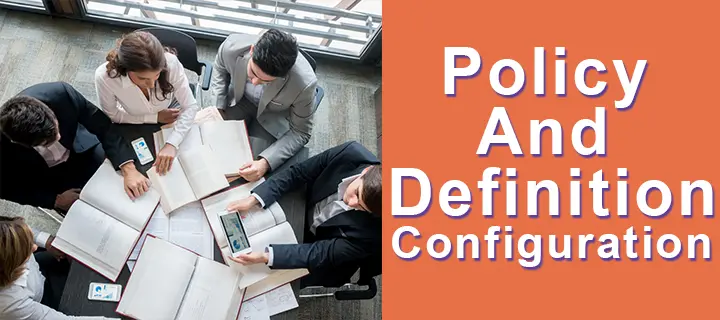- Speak to an Expert
- +92 321 2010441
Policy Definition and Configuration
- Home
- Services
- Policy Definition and Configuration
Policy Definition and Configuration involves establishing guidelines and settings to govern the behavior and functionality of systems, applications, and processes within an organization.
Policy Definition and Configuration services include:
- Guiding Principles: Establish overarching principles and objectives that align with the organization's goals, values, and regulatory requirements.
- Risk Assessment: Conduct thorough assessments to identify potential risks, threats, and vulnerabilities that policies aim to mitigate.
- Policy Framework: Develop a comprehensive framework outlining policies, procedures, and controls to govern various aspects of operations, security, and compliance.
- Stakeholder Collaboration: Collaborate with key stakeholders across departments to ensure policies reflect diverse perspectives and address specific needs and concerns.
- Legal Compliance: Ensure policies adhere to relevant laws, regulations, and industry standards to mitigate legal and regulatory risks.
- Continuous Review: Regularly review and update policies in response to changing business requirements, technology advancements, and emerging threats.
- Configuration:
- Policy Implementation: Translate policy requirements into specific configurations, settings, and controls within systems, applications, and networks.
- Granular Controls: Configure fine-grained controls and permissions to enforce policy requirements at various levels, from user access rights to network security settings.
- Automation: Utilize automation tools and scripts to streamline policy configuration processes and ensure consistency across the organization.
- Monitoring and Enforcement: Implement monitoring mechanisms to track compliance with configured policies and enforce corrective actions when violations occur.
- Adaptive Configuration: Continuously adapt and refine configurations based on evolving threats, operational needs, and feedback from monitoring and compliance assessments.
- Documentation: Maintain detailed documentation of policy configurations, including rationale, settings, and change history, to facilitate auditing, troubleshooting, and knowledge sharing.

